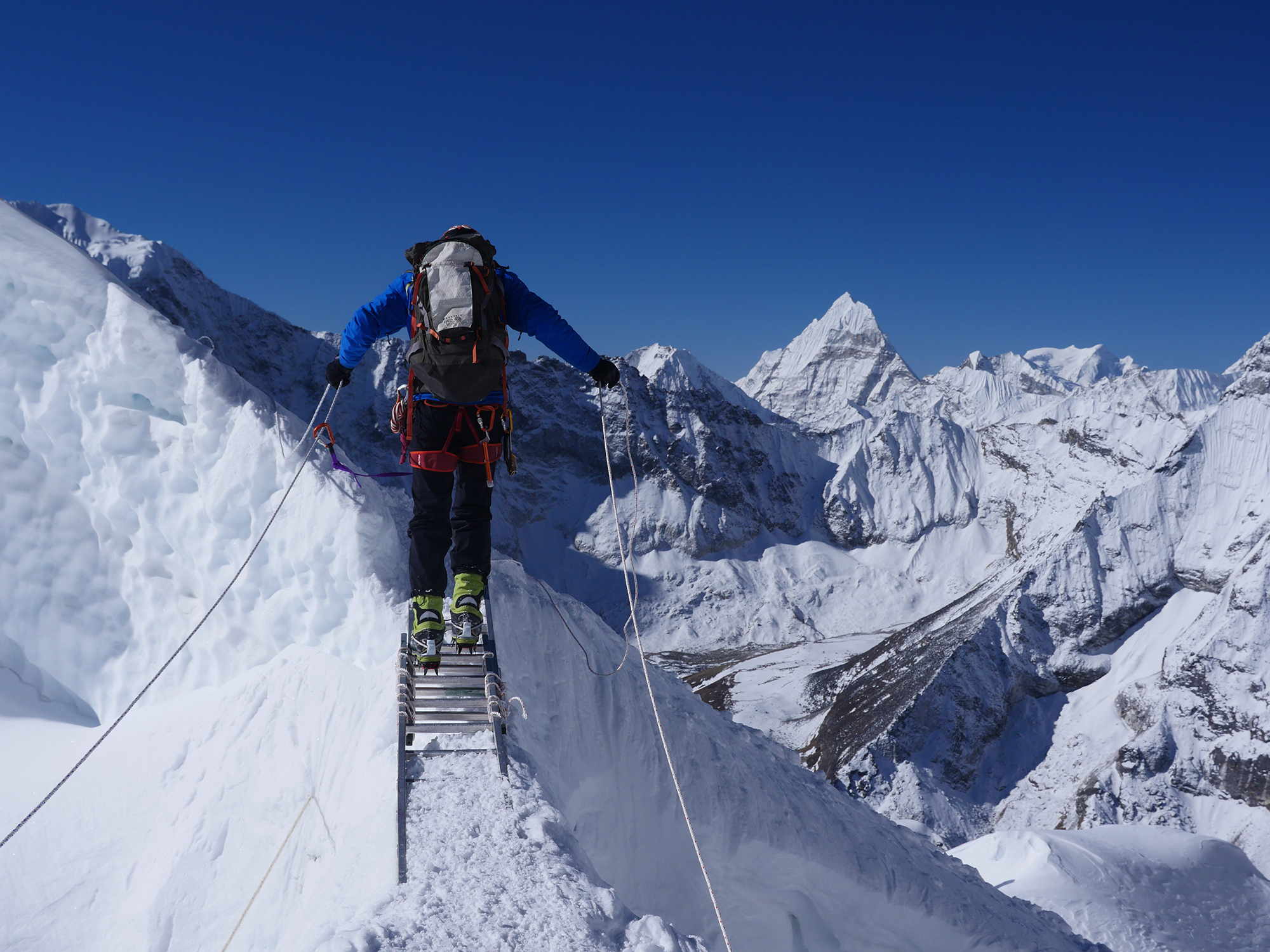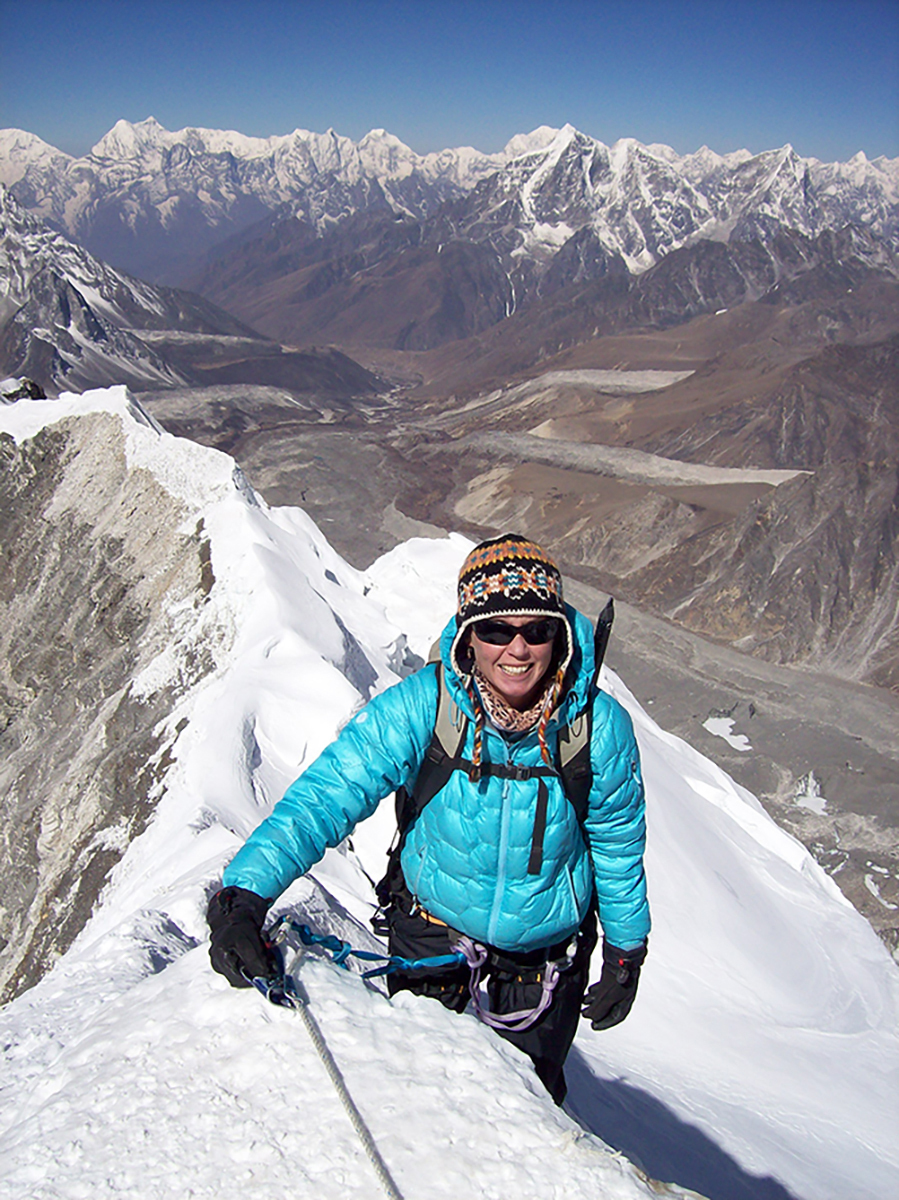
Climbing at high altitude is not on everyone’s bucket list but it is a very rewarding activity and physical endurance achievement. There’s something about being up high above 5000m, the air seems thinner, you can somehow see further and that feeling of being ‘on the edge’ is palpable.
Plus climbing above 6000m always involves travel to the Himalaya chain of mountains in Asia or the Andes in South America so you have an adventure, climbing and travel to explore a new culture and land all rolled into one journey. What could be more perfect!

Without being able to get to any of these exotic destinations at present, the best thing you can do is put the time into preparing and training for your future travel and high altitude climbing. In New Zealand we are blessed with Himalayan-like mountains, renowned for their steepness, ruggedness and glaciation but without the debilitating breath sapping effects of high altitude to deal with. When Kiwis go to climb at high altitude overseas, they often do very well as they have had such a good base to train from.
A great place to start is to tackle some of the Department of Conservation Great Walks, carrying all your own gear and generally getting yourself what we call ‘pack fit’. Then, with some experience in longer day walks there are off trail or more rugged options for routes to explore and access our amazing network of backcountry huts. Thus, doing what we call ‘mileage’ with classic Kiwi tramping as a base for all that is to come (why stop there!).
All the tramping that’s straightforward in New Zealand is generally below the snow line, so to gain experience for skills that you need to safely move around on snow, ice, rock and glaciers, the wise choice is to then sign on to a mountaineering course operated by professional mountain guides. With everything from 1 day to 12-day options it’s more about time commitment than anything as the cost is similar to what you would spend on an overseas travel holiday.
On a mountaineering course you start with the basics and your guides ensure you are confident with snowcraft and rope skills applicable to alpine climbing, before moving on to glacier travel and self-rescue, navigation, route finding and weather analysis. Along the way you learn more about pacing, self-care, planning and preparation and all the while getting to know your gear, what works and what doesn’t. Plus, you even climb a mountain or two! Courses are usually based in Westland or Aoraki Mt Cook National Parks and your first peak might be Hochstetter Dome at the head of the Tasman Glacier or Aurora Peak above Centennial Hut.
At the end of a mountaineering course, the sense of accomplishment you feel with your new-found alpine climbing skills never leaves you. The investment of time and learning is everything you need to set you up for next steps in the exciting world of mountaineering, which might be climbing a substantial New Zealand peak such as Mt Aspiring, 3,033m. An alpine start (3.00am) is required on such a big climb and you are well into the climb once dawn arrives along with experiencing one of your first alpine sunrises, let alone the feeling of satisfaction of reaching the summit and then a descent back to the hut for that welcome cup of tea and overall feeling of tiredness and satisfaction that a big day out in the hills provides.
How does all this matter for climbing Island Peak 6,189m in Nepal, or Aconcagua 6,962m in Argentina, both great choices for a 6000m peak? Aren’t these called non-technical ascents? The thing with climbing at high altitude is that it requires immense energy just to put one foot in front of the other, due to the lack of oxygen reaching your muscles, so the climbing you tackle needs to be straightforward. Fixed lines are used for safety and the climbing is certainly not as technical, but with your experience gained in New Zealand on a mountaineering course, everything feels second nature and you can focus on the altitude hurdle. A summit day on Island Peak typically takes 12-15 hours, since you start climbing in the dark at midnight, and return back to Base Camp by mid-afternoon. Good fitness and endurance is imperative but just as important is the ability to move efficiently whilst encased in mountaineering gear, and any new challenges can be overcome, as you will have done all this before, albeit at lower altitudes in New Zealand.

So whilst we might have a long time to wait until we can explore the greater ranges of the world again, you can use this precious time to upskill and experience the best that the Southern Alps has to offer. We are so lucky to have this training ground in our backyard here, and it’s the perfect place to hone your skills and fitness and put in the preparation time required to build up to climbing a 6000m peak.
Suze Kelly is Adventure Consultants’ Director and has a wealth of tramping and mountaineering experience in New Zealand and across the globe. She has climbed numerous high altitude peaks, including Kilimanjaro, Aconcagua, Island Peak, Mt Vinson, Lhotse and Mt Everest. Please note this article was written during the Covid-19 pandemic when international travel opportunities were limited.